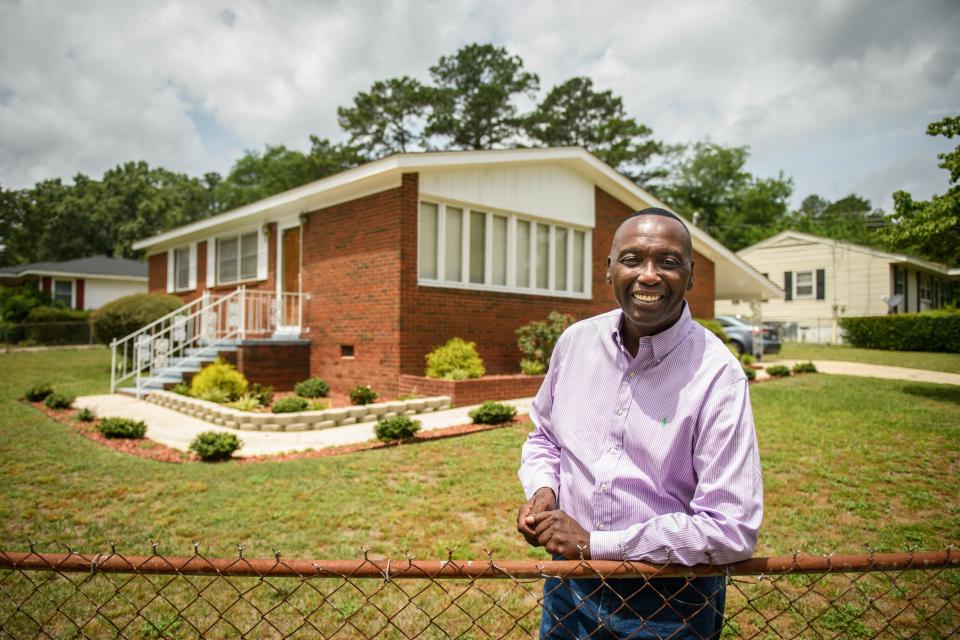Five things to know about Fayetteville's Savoy Heights neighborhood
Less than two miles from downtown Fayetteville is the Savoy Heights neighborhood. Established in 1960, the neighborhood has been home to many Black residents in the city.
Now, the residents in the neighborhood are worried they are beginning to see some early signs of gentrification as some older homes are being sold and new homes are being built with higher prices.
Current and former residents of the neighborhood have raised some concerns about the area and want to see Savoy Heights preserved and protected as change looms.
Read this: A complete guide to Fayetteville, Cumberland County Juneteenth celebrations
For subscribers: Saving Savoy Heights and the people who call it home: 'We want to preserve it as it was'
1. Where is Savoy Heights actually located in Fayetteville?
Many people in Fayetteville know of Savoy Heights because of its close proximity to the Haymount Historic District. The two neighborhoods are separated by parts of Hay Street. Haymount starts at the bottom of the hill where Hay Street and Bragg Blvd meet.
Savoy Heights mostly begins on Commerce Street in Fayetteville. If you follow Bragg Boulevard it soon becomes Robeson Street, and if you make a right onto Commerce Street, past the Olive Glass and Marble company, you find yourself in front of the Savoy Heights sign.
Located in the city's District 2, other streets that make up Savoy Heights include Weiss Avenue; Turnpike Road; Augusta, Fleetwood, Rochester and Chesterfield drives; and Ashley, Perley and Dwain streets.
2. When was Savoy Heights developed?
The early development plans for what we know now as Savoy Heights date to about the mid-1950s, according to Bruce Daws, the city historian. Then, many of the streets making up the neighborhood didn't exist and most of them were paved when homes were built.
1960 was the official year the Savoy Heights neighborhood was established.
Homes were built in a variety of different styles with hip roofs, gable-ended structures and asbestos shingles, brick houses, houses with siding and others with original housing stock. The area has been expanded over the years.
Homes didn't begin to be built in Savoy Heights until 1960 which brought an influx of Black families to the area. Now, about 54% of residents own their homes. The average age of residents is 56.

3. What are some landmarks or businesses in the neighborhood?
There are several schools and businesses in the neighborhood. The younger school-aged kids mostly attend Alma Easom Elementary School on Westlawn Avenue or Ashley Elementary School on Trainer Drive.
R. Max Abbott Middle School and Terry Sanford High School are the two main schools for older kids in the neighborhood. Terry Sanford was integrated by many Black children who lived in Savoy Heights, though it was a predominately white school before the 1970s.
Some notable businesses in the neighborhood are Olive Glass and Marble Company; Banging Systems Car Audio, Inc.; Busy Bodies Home Childcare Services; Love N Care Childcare; and M&G Lawn Care.
Churches in the neighborhood include Calvary Sanctuary Deliverance, Guiding Star Holiness Church and Eastside Pentecostal Holy Church.

The Geraldine B. Myers Recreation Center on Rochester Drive is a staple of the Savoy Heights community. Myers was a resident of the neighborhood who raised money in the early 1980s to open a recreation center for children.
Weather Permitting: Here's how to stay cool during Fayetteville's brutal heat this week
Fayetteville: Lakefront home in Forest Lakes neighborhood for sale for $759,900
4. Who are some notable people from Savoy Heights?
In addition to Myers being a Fayetteville namesake, Cumberland County Commissioner Charles Evans, who also served on the Fayetteville City Council, was born and raised in the Savoy Heights neighborhood. He still lives in the home his parents bought in the early 1960s.
Countless Savoy Heights residents who first moved into the new neighborhood in the 1960s went on to become officers in the United States military, school principals, local leaders, and authors.
5. What was Savoy Heights before it was Savoy Heights?
Before the end of the 1950s, the area that is now known as Savoy Heights in Fayetteville was a forest full of pine trees, according to Daws.
The name Savoy is defined as a number of different things including another word for a cabbage. However, some experts say the word is derived from the Latin word "Sapaudia" which is a blended word from the Celtic word sappos, or fir tree, and the Latin word pinus, meaning pine tree.
Daws said Savoy Heights probably got its name from the pine trees and because when you turn onto Commerce Street, the heart of the neighborhood, you are visibly climbing up a hill.
Today, pine trees still stand in the neighborhood in front and back yards and along the sidewalks.
Investigative Reporter Kristen Johnson can be reached at kjohnson1@gannett.com.
This article originally appeared on The Fayetteville Observer: Savoy Heights neighborhood: Five facts you should know

